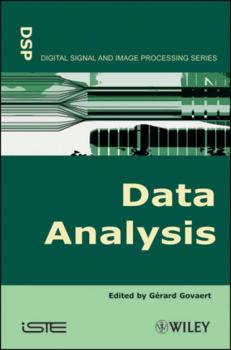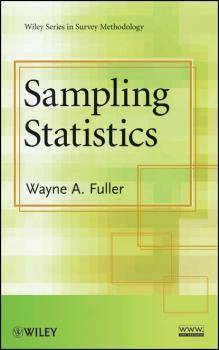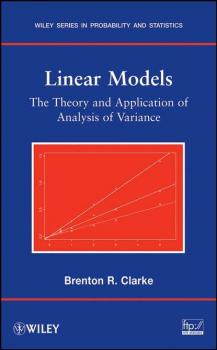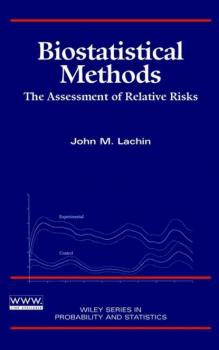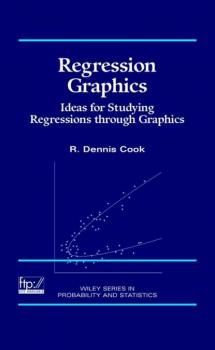MREADZ.COM - много разных книг на любой вкус
Скачивание или чтение онлайн электронных книг.Data Analysis
The first part of this book is devoted to methods seeking relevant dimensions of data. The variables thus obtained provide a synthetic description which often results in a graphical representation of the data. After a general presentation of the discriminating analysis, the second part is devoted to clustering methods which constitute another method, often complementary to the methods described in the first part, to synthesize and to analyze the data. The book concludes by examining the links existing between data mining and data analysis.
Sampling Statistics
Discover the latest developments and current practices in survey sampling Survey sampling is an important component of research in many fields, and as the importance of survey sampling continues to grow, sophisticated sampling techniques that are both economical and scientifically reliable are essential to planning statistical research and the design of experiments. Sampling Statistics presents estimation techniques and sampling concepts to facilitate the application of model-based procedures to survey samples. The book begins with an introduction to standard probability sampling concepts, which provides the foundation for studying samples selected from a finite population. The development of the theory of complex sampling methods is detailed, and subsequent chapters explore the construction of estimators, sample design, replication variance estimation, and procedures such as nonresponse adjustment and small area estimation where models play a key role. A final chapter covers analytic studies in which survey data are used for the estimation of parameters for a subject matter model. The author draws upon his extensive experience with survey samples in the book's numerous examples. Both the production of «general use» databases and the analytic study of a limited number of characteristics are discussed. Exercises at the end of each chapter allow readers to test their comprehension of the presented concepts and techniques, and the references provide further resources for study. Sampling Statistics is an ideal book for courses in survey sampling at the graduate level. It is also a valuable reference for practicing statisticians who analyze survey data or are involved in the design of sample surveys.
Environmental Statistics
Environmental statistics is a rapidly growing discipline that is important not only as a division of professional and academic statistics, but also in the accumulation of data on environmental effects and in the formulation of environmental policy by government agencies. This book features contributions from policy makers, scientists actively involved in collection of data, and professional, academic and government statisticians. These explore the interfaces between the different areas of application of environmental statistics and consider the future applications of methods arising from this discipline. Some of the chapters deal specifically with environmental models and methods. Here, the contributors explain specialized statistical techniques that have been developed for analysing environmental data and mathematical models that have been applied to the problem of integrating large amounts of environmental data into a coherent picture of particular environmental systems. Several of the contributions deal specifically with the problems involved in co-ordinating data collection over large geographical areas and over many dimensions of measurement. Finally, the book discusses the problems of formulating specific environmental policies given the nature of the information that has been made available using environmental statistical methods.
Quantitative Finance
A rigorous, yet accessible, introduction to essential topics in mathematical finance Presented as a course on the topic, Quantitative Finance traces the evolution of financial theory and provides an overview of core topics associated with financial investments. With its thorough explanations and use of real-world examples, this book carefully outlines instructions and techniques for working with essential topics found within quantitative finance including portfolio theory, pricing of derivatives, decision theory, and the empirical behavior of prices. The author begins with introductory chapters on mathematical analysis and probability theory, which provide the needed tools for modeling portfolio choice and pricing in discrete time. Next, a review of the basic arithmetic of compounding as well as the relationships that exist among bond prices and spot and forward interest rates is presented.? Additional topics covered include: Dividend discount models Markowitz mean-variance theory The Capital Asset Pricing Model Static?portfolio theory based on the expected-utility paradigm Familiar probability models for marginal distributions of returns and the dynamic behavior of security prices The final chapters of the book delve into the paradigms of pricing and present the application of martingale pricing in advanced models of price dynamics. Also included is a step-by-step discussion on the use of Fourier methods to solve for arbitrage-free prices when underlying price dynamics are modeled in realistic, but complex ways. Throughout the book, the author presents insight on current approaches along with comments on the unique difficulties that exist in the study of financial markets. These reflections illustrate the evolving nature of the financial field and help readers develop analytical techniques and tools to apply in their everyday work. Exercises at the end of most chapters progress in difficulty, and selected worked-out solutions are available in the appendix. In addition, numerous empirical projects utilize MATLAB® and Minitab® to demonstrate the mathematical tools of finance for modeling the behavior of prices and markets. Data sets that accompany these projects can be found via the book's FTP site. Quantitative Finance is an excellent book for courses in quantitative finance or financial engineering at the upper-undergraduate and graduate levels. It is also a valuable resource for practitioners in related fields including engineering, finance, and economics.
Robust Statistics
A new edition of the classic, groundbreaking book on robust statistics Over twenty-five years after the publication of its predecessor, Robust Statistics, Second Edition continues to provide an authoritative and systematic treatment of the topic. This new edition has been thoroughly updated and expanded to reflect the latest advances in the field while also outlining the established theory and applications for building a solid foundation in robust statistics for both the theoretical and the applied statistician. A comprehensive introduction and discussion on the formal mathematical background behind qualitative and quantitative robustness is provided, and subsequent chapters delve into basic types of scale estimates, asymptotic minimax theory, regression, robust covariance, and robust design. In addition to an extended treatment of robust regression, the Second Edition features four new chapters covering: Robust Tests Small Sample Asymptotics Breakdown Point Bayesian Robustness An expanded treatment of robust regression and pseudo-values is also featured, and concepts, rather than mathematical completeness, are stressed in every discussion. Selected numerical algorithms for computing robust estimates and convergence proofs are provided throughout the book, along with quantitative robustness information for a variety of estimates. A General Remarks section appears at the beginning of each chapter and provides readers with ample motivation for working with the presented methods and techniques. Robust Statistics, Second Edition is an ideal book for graduate-level courses on the topic. It also serves as a valuable reference for researchers and practitioners who wish to study the statistical research associated with robust statistics.
Linear Models
An insightful approach to the analysis of variance in the study of linear models Linear Models explores the theory of linear models and the dynamic relationships that these models have with Analysis of Variance (ANOVA), experimental design, and random and mixed-model effects. This one-of-a-kind book emphasizes an approach that clearly explains the distribution theory of linear models and experimental design starting from basic mathematical concepts in linear algebra. The author begins with a presentation of the classic fixed-effects linear model and goes on to illustrate eight common linear models, along with the value of their use in statistics. From this foundation, subsequent chapters introduce concepts pertaining to the linear model, starting with vector space theory and the theory of least-squares estimation. An outline of the Helmert matrix is also presented, along with a thorough explanation of how the ANOVA is created in both typical two-way and higher layout designs, ultimately revealing the distribution theory. Other important topics covered include: Vector space theory The theory of least squares estimation Gauss-Markov theorem Kronecker products Diagnostic and robust methods for linear models Likelihood approaches to estimation A discussion of Bayesian theory is also included for purposes of comparison and contrast, and numerous illustrative exercises assist the reader with uncovering the nature of the models, using both classic and new data sets. Requiring only a working knowledge of basic probability and statistical inference, Linear Models is a valuable book for courses on linear models at the upper-undergraduate and graduate levels. It is also an excellent reference for practitioners who use linear models to conduct research in the fields of econometrics, psychology, sociology, biology, and agriculture.
Biostatistical Methods
Comprehensive coverage of classical and modern methods of biostatistics Biostatistical Methods focuses on the assessment of risks and relative risks on the basis of clinical investigations. It develops basic concepts and derives biostatistical methods through both the application of classical mathematical statistical tools and more modern likelihood-based theories. The first half of the book presents methods for the analysis of single and multiple 2x2 tables for cross-sectional, prospective, and retrospective (case-control) sampling, with and without matching using fixed and two-stage random effects models. The text then moves on to present a more modern likelihood- or model-based approach, which includes unconditional and conditional logistic regression; the analysis of count data and the Poisson regression model; and the analysis of event time data, including the proportional hazards and multiplicative intensity models. The book contains a technical appendix that presents the core mathematical statistical theory used for the development of classical and modern statistical methods. Biostatistical Methods: The Assessment of Relative Risks: * Presents modern biostatistical methods that are generalizations of the classical methods discussed * Emphasizes derivations, not just cookbook methods * Provides copious reference citations for further reading * Includes extensive problem sets * Employs case studies to illustrate application of methods * Illustrates all methods using the Statistical Analysis System(r) (SAS) Supplemented with numerous graphs, charts, and tables as well as a Web site for larger data sets and exercises, Biostatistical Methods: The Assessment of Relative Risks is an excellent guide for graduate-level students in biostatistics and an invaluable reference for biostatisticians, applied statisticians, and epidemiologists.
Spatial Tessellations
Spatial data analysis is a fast growing area and Voronoi diagrams provide a means of naturally partitioning space into subregions to facilitate spatial data manipulation, modelling of spatial structures, pattern recognition and locational optimization. With such versatility, the Voronoi diagram and its relative, the Delaunay triangulation, provide valuable tools for the analysis of spatial data. This is a rapidly growing research area and in this fully updated second edition the authors provide an up-to-date and comprehensive unification of all the previous literature on the subject of Voronoi diagrams. Features: * Expands on the highly acclaimed first edition * Provides an up-to-date and comprehensive survey of the existing literature on Voronoi diagrams * Includes a useful compendium of applications * Contains an extensive bibliography A wide range of applications is discussed, enabling this book to serve as an important reference volume on this topic. The text will appeal to students and researchers studying spatial data in a number of areas, in particular, applied probability, computational geometry, and Geographic Information Science (GIS). This book will appeal equally to those whose interests in Voronoi diagrams are theoretical, practical or both.
Directional Statistics
Presents new and up-dated material on both the underlying theory and the practical methodology of directional statistics, helping the reader to utilise and develop the techniques appropriate to their work. The book is divided into three parts. The first part concentrates on statistics on the circle. Topics covered include tests of uniformity, tests of good-of-fit, inference on von Mises distributions and non-parametric methods. The second part considers statistics on spheres of arbitrary dimension, and includes a detailed account of inference on the main distributions on spheres. Recent material on correlation, regression time series, robust techniques, bootstrap methods, density estimation and curve fitting is presented. The third part considers statistics on more general sample spaces, in particular rotation groups, Stiefel manifolds, Grassmann manifolds and complex projective spaces. Shape analysis is considered from the perspective of directional statistics. Written by leading authors in the field, this text will be invaluable not only to researchers in probability and statistics interested in the latest developments in directional statistics, but also to practitioners and researchers in many scientific fields, including astronomy, biology, computer vision, earth sciences and image analysis.
Regression Graphics
An exploration of regression graphics through computer graphics. Recent developments in computer technology have stimulated new and exciting uses for graphics in statistical analyses. Regression Graphics, one of the first graduate-level textbooks on the subject, demonstrates how statisticians, both theoretical and applied, can use these exciting innovations. After developing a relatively new regression context that requires few scope-limiting conditions, Regression Graphics guides readers through the process of analyzing regressions graphically and assessing and selecting models. This innovative reference makes use of a wide range of graphical tools, including 2D and 3D scatterplots, 3D binary response plots, and scatterplot matrices. Supplemented by a companion ftp site, it features numerous data sets and applied examples that are used to elucidate the theory. Other important features of this book include: * Extensive coverage of a relatively new regression context based on dimension-reduction subspaces and sufficient summary plots * Graphical regression, an iterative visualization process for constructing sufficient regression views * Graphics for regressions with a binary response * Graphics for model assessment, including residual plots * Net-effects plots for assessing predictor contributions * Graphics for predictor and response transformations * Inverse regression methods * Access to a Web site of supplemental plots, data sets, and 3D color displays. An ideal text for students in graduate-level courses on statistical analysis, Regression Graphics is also an excellent reference for professional statisticians.
